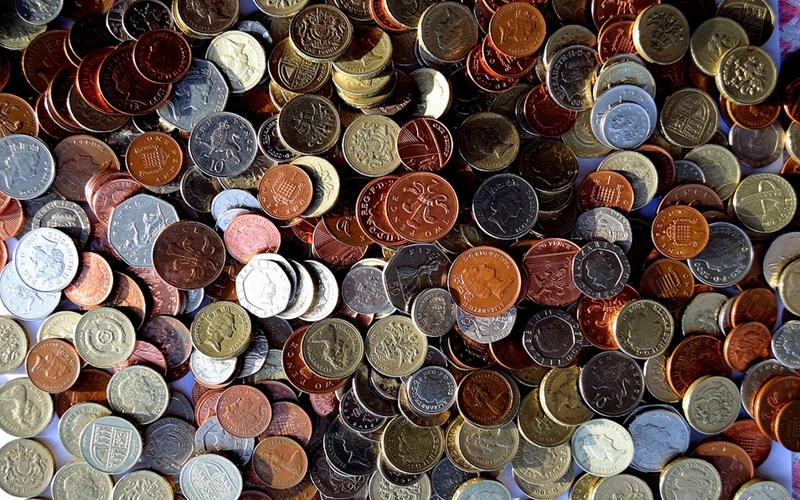What are Stablecoins?
A Stablecoin is a type of cryptocurrency which has its valued linked or backed by another asset. Stablecoins were designed to have the transactional advantages of cryptos but with the stability of more traditional assets.
Some stablecoins are pegged to fiat currencies, such as the dollar, or a commodity like a bar of gold. Another type of stablecoin is that which is backed by another cryptocurrency, or that exist as an auto-correcting system based on algorithms.
These types of stablecoins can be thus divided into three categories: centralized IOU stablecoins, crypto-collateralized stablecoins, and non-collateralized stablecoins. We shall discuss each of them in particular in the rest of our article.
1. Centralized IOU Stablecoins
Centralized IOU stablecoins are the most direct form of stablecoin. These are tied to the value of fiat currencies or precious metals, such as the U.S. Dollar or other dominant currencies. Centralized IOU stablecoins derive their value by representing that of another asset.
The community disapproves of this type of stablecoin for being rather centralized, needing the trust of an issuing party and has to comply with intense regulation. When depositing fiat into the bank account connected to the stablecoin, the network issues new coins. And when you liquidate the stablecoins, those coins are burned by the network and you receive the collateral.
– TrueUSD
The TrueUSD system has several trust companies which hold U.S. dollars in their bank accounts. This system is different from Tether, where just one banking partner holds the collateral. Also, TrueUSD makes the origin of its backing funds transparent by publishing the contents of its bank accounts every day and being audited on a monthly basis.
TrustToken has managed to raise $21.7 so far, the majority of which was gathered in a $20 million Initial Coin Offering (ICO) which concluded in June 2018. ICO participants include Andreessen Horowitz (lead), DHVC, BlockTower Capital, 8 Decimal Capital, Foundation Capital, ZhenFund, and many others.
– Gemini Dollar and Paxos Standard Token
The Gemini Dollar (GUSD), which was created by Gemini Exchange, and the Paxos Standard Token (PAX), launched by Paxos, are also two centralized IOU stablecoins. Both stablecoins were launched in early September 2018 after receiving approval from the New York Department of Financial Services (NYDFS).
Both tokens are based on the ERC-20 protocol and are collateralized at a one-to-one ration with U.S. dollars that are held in FDIC-insured banks located in the US.
Gemini and Paxos got their BitLicenses in October 2015, and May 2015, correspondingly. As they are regulation compliant, any GUSD or PAX stablecoin that is used in illegal activities may be subjected to confiscation or penalization by a law enforcement agency.
– Digix Gold
Digix Gold (DGX) is another centralized IOU stablecoin project, which instead of using fiat currency as collateral it uses gold. Each DGX token is tied to the value of one gram of gold.
Digix employs a Proof of Asset (PoA) consensus mechanism which verifies ownership on the Ethereum blockchain. The gold used as collateral is stored by the company in a custodian vault, The Safe House, which is located in Singapore. The Safe House has a storage capacity of 30 tons of gold, but Digix is looking to collaborate with more vaults from more regions.
2. Crypto-Collateralized Stablecoins
Crypto-collateralized stablecoins are backed by other crypto assets, such as Ethereum or other tokens or coins.
– Dai
MakerDAO is a known project which uses the crypto-collateralize mechanism and the Dai stablecoin. MakerDAO has implemented a two-coin model: Makercoin (MKR) and Dai (DAI).
Makercoin is used as a governance token on the Maker Platform, while Dai is the stablecoin that lock up Ether in a collateralized debt position or CDP.
– Havven
The Nomin has a variating supply to stabilize its price, while Havven has a stable supply, serving as collateral for the system. The value of Havven is determined on the projected network fees. Havven holders are eligible to receive dividends from locking funds in a smart contract.
The stability of Nomins is based on the value of Havvens and is also collateralized by Havvens.
3. Non-Collateralized Stablecoins
Non-Collateralized Stablecoins achieve a stable price by using something called seigniorage shares. The concept was created by Robert Sams in 2014.
Seigniorage shares employ smart contract technology and act similar to a central bank in which its only monetary obligation is to issue currency with a value of $1. Simply put, the network issues new coins when a stablecoin’s price is too high, and burns coins when the price is too low.
– Basis
The Basis Token is a non-collateralized stablecoin which has its price stabilized via on-chain supply management. When the price of Basis strays from its set balance, the smart contract creates or burns tokens in order to bring the price back to $1 and tries to maintain it there.
– CarbonUSD
Carbon is currently based on the Ethereum blockchain, but there are plans to transfer it to Hedera Hashgraph, a crypto protocol.
Conclusion
It was stated in a report called The State of Stablecoins made by Blockchain Luxembourg SA, that an estimate of 98% of the total daily trading volume of stablecoins belongs to Tether. The above-mentioned stablecoins in this article are all looking to become worthy competitors to Tether and get their share of the market. Whether they will manage to achieve this remains to be seen in time.
